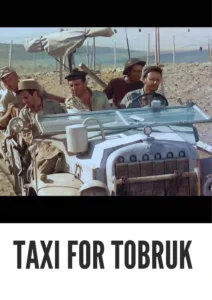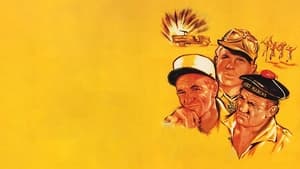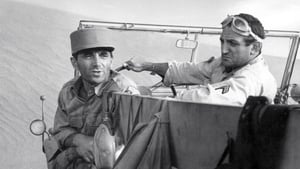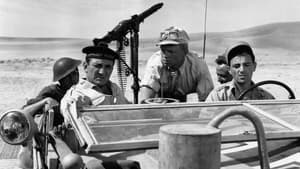Video Sources 0 Views

Synopsis

Immerse yourself in the stark realities of World War II with Taxi for Tobruk, a compelling war drama from 1961, now brilliantly colorized to bring a new dimension to this classic film. Directed by Denys de La Patellière, the film features a stellar cast including Lino Ventura and Hardy Krüger, delivering a powerful story of survival, camaraderie, and the moral complexities of war. Perfect for enthusiasts of war films and those seeking a thought-provoking cinematic experience, this HD download offers a revitalized look at a memorable piece of film history.
Taxi for Tobruk unfolds in the North African desert during the tumultuous Battle of El Alamein in 19421. The film centers on a Free French LRDG commando unit that finds itself stranded after a raid on a German position1. Facing dwindling supplies and the relentless desert, the commandos capture a German officer, Captain Ludwig von Stegel, played by Hardy Krüger12.
As they navigate the treacherous landscape, an uneasy alliance forms between the French soldiers and their German prisoner3. They must rely on each other to survive the harsh conditions and evade enemy forces3. The journey tests their loyalties and forces them to confront their prejudices1. The film explores themes of humanity, betrayal, and the absurdity of war as the group faces various life-threatening challenges, including minefields and enemy encounters1. The climax sees the group nearing El Alamein, only to be caught in a devastating turn of events that underscores the tragic consequences of war1.
Taxi for Tobruk boasts a remarkable cast whose performances elevate the film’s emotional depth:
-
Lino Ventura as Théo Dumas2
-
Hardy Krüger as Captain Ludwig von Stegel2
-
Charles Aznavour as Samuel Goldmann2
-
Maurice Biraud as François Gensac2
-
Germán Cobos as Paolo Ramirez2
Taxi for Tobruk is primarily a war drama, enriched with elements of action and adventure. Its intense character dynamics and moral dilemmas set it apart, offering a gripping narrative beyond typical war stories.
Released in 1961, Taxi for Tobruk reflects the post-war era’s introspection on the events of World War II. As a co-production between France, Spain, and West Germany, the film exemplifies the collaborative spirit in European cinema during that time1. It provides a European perspective on the war, differing from American portrayals by focusing on the psychological impacts and moral ambiguities faced by soldiers.
This colorized version of Taxi for Tobruk has been meticulously restored using contemporary digital techniques, enhancing the visual experience while preserving the film’s original atmosphere4. The colorization process involved carefully analyzing the grayscale tones of the original black and white footage and assigning appropriate colors to each scene4. Advanced algorithms for color palette selection and image enhancement were employed4. This painstaking process brings new life to the characters and settings, making the story even more engaging for modern audiences4. This ensures their legacy for future generations.
-
: Denys de La Patellière2
-
: Denys de La Patellière, René Havard2
-
: Georges Garvarentz, Charles Aznavour2
-
: Continental, Franco London Films, SNE Gaumont, Procusa2
-
: Gaumont Distribution2
-
: 95 minutes2
-
: MP4
-
: HD (1080p)
-
: Compatible with most devices, including smartphones, tablets, computers, and smart TVs.
Taxi for Tobruk (1961) is celebrated for its compelling narrative, strong performances, and thought-provoking exploration of war’s moral complexities3. The film’s ability to humanize characters on both sides of the conflict has resonated with audiences and critics alike. Taxi for Tobruk remains a significant work in the war drama genre.
-
: What is Taxi for Tobruk about?
-
A: Taxi for Tobruk is about a group of French commandos and a German officer who must cooperate to survive in the North African desert during World War II1.
-
-
: Who are the main actors in Taxi for Tobruk?
-
A: The main actors are Lino Ventura, Hardy Krüger, and Charles Aznavour2.
-
-
: Is this version of Taxi for Tobruk colorized?
-
A: Yes, this version has been professionally colorized to enhance the viewing experience4.
-
-
: What makes Taxi for Tobruk interesting for war film fans?
-
A: Taxi for Tobruk offers a complex and humanistic portrayal of war, focusing on the relationships and moral challenges faced by soldiers on both sides1.
-
-
: What is the download format?
-
A: The download format is MP4, which is compatible with most devices.
-
-
: What resolution is the download?
-
A: The resolution is HD (1080p), providing a high-quality viewing experience.
-
Experience Taxi for Tobruk today!








